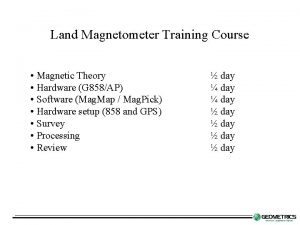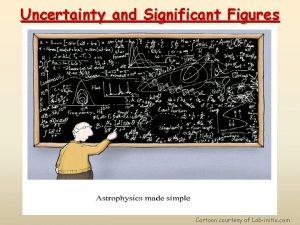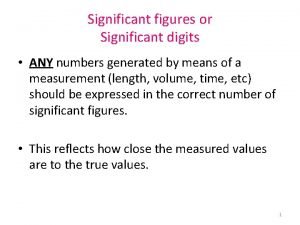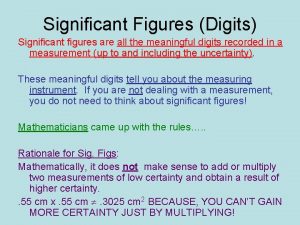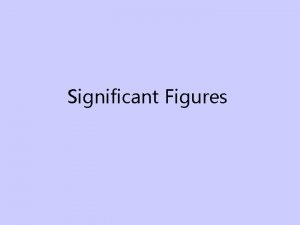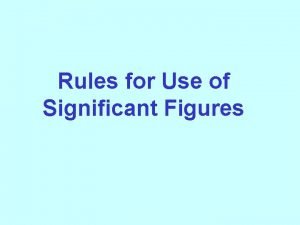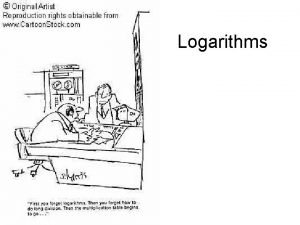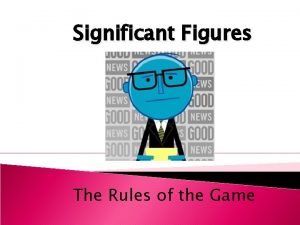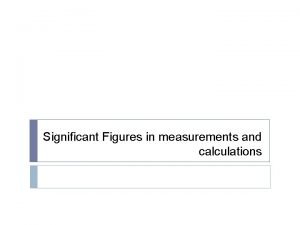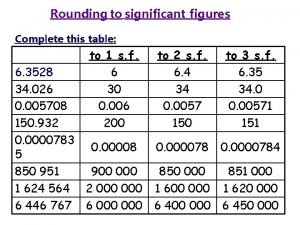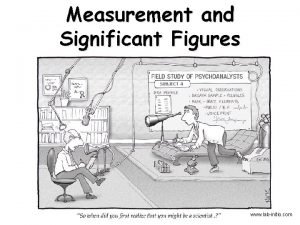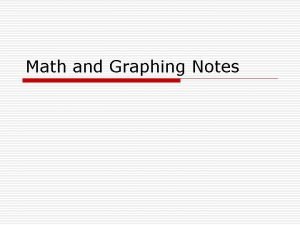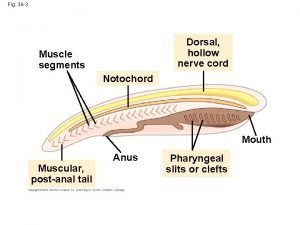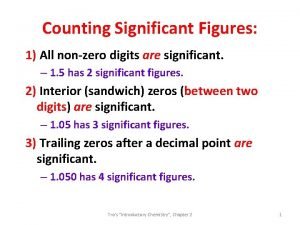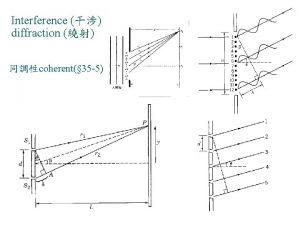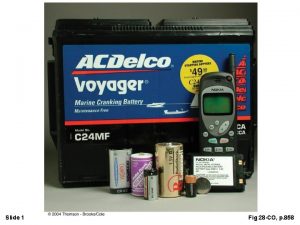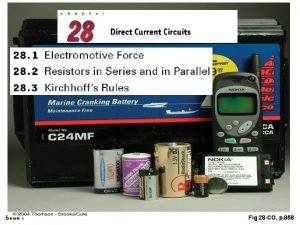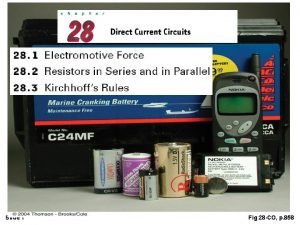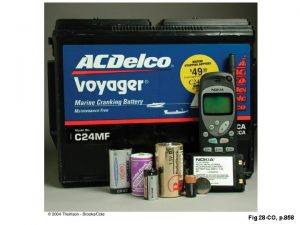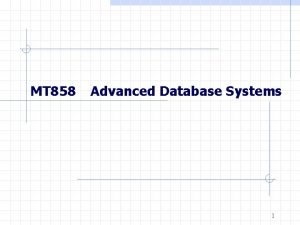Slide 1 Fig 28 CO p 858 Introduction






































- Slides: 38

Slide 1 Fig 28 -CO, p. 858

Introduction • This chapter is concerned with the analysis of some simple electric circuits that contain batteries, resistors, and capacitors in various combinations. The analysis of these circuits is simplified by the use of two rules known as Kirchhoff’s rules, which follow from the laws of conservation of energy and conservation of electric charge. • Most of the circuits analyzed are assumed to be in steady state, which means that the currents are constant in magnitude and direction. Slide 2

A constant current can be maintained in a closed circuit through the use of a source of emf, (such as a battery or generator) that produces an electric field and thus may cause charges to move around a circuit. One can think of a source of emf as a “charge pump. ” When an electric potential difference exists between two points, the source moves charges “uphill” from the lower potential to the higher. The emf describes the work done per unit charge, and hence the SI unit of emf is the volt. Slide 3

Øassume that the connecting wires have no resistance. ØThe positive terminal of the battery is at a higher potential than the negative terminal. If we neglect the internal resistance of the battery, the potential difference across it (called the terminal voltage) equals its emf. Ø However, because a real battery always has some internal resistance r, the terminal voltage is not equal to the emf for a battery in a circuit in which there is a current. A circuit consisting of a resistor connected to the terminals of a battery. Slide 4

Ø As we pass from the negative terminal to the positive terminal, the potential increases by an amount ε. Ø As we move through the resistance r, the potential decreases by an amount Ir, where I is the current in the circuit. Ø ε : is equivalent to the open-circuit voltage—that is, the terminal voltage when the current is zero. The emf is the voltage labeled on a battery, …. Øthe terminal voltage V must equal the potential difference across the external resistance R, often called the load resistance. Slide 5

the changes in electric potential as the circuit is traversed in the clockwise direction Ø The resistor represents a load on the battery because the battery must supply energy to operate the device. The potential difference across the load resistance is ΔV = IR Øthe total power output Iε of the battery is delivered to the external load resistance in the amount I 2 R and to the internal resistance in the amount I 2 r. Slide 6 Fig 28 -2 b, p. 860

Slide 7

Slide 8

* A battery has an emf of 15. 0 V. The terminal voltage of the battery is 11. 6 V when it is delivering 20. 0 W of power to an external load resistor R. (a) What is the value of R? (b) What is the internal resistance of the battery? Slide 9

When two or more resistors are connected together as are the light- bulbs, they are said to be in series. In a series connection, all the charges moving through one resistor must also pass through the second resistor. This relationship indicates that the equivalent resistance of a series connection of resistors is always Slide 10 greater than any individual resistance.

Now consider two resistors connected in parallel, When the current I reaches point a in Figure 28. 5 b, called a junction, it splits into two parts, with I 1 going through R 1 and I 2 going through R 2. A junction is any point in a circuit where a current can split Slide 11

…the equivalent resistance of two or more resistors connected in parallel is always less than the least resistance in the group. * Household circuits are always wired such that the appliances are connected in parallel. Each device operates independently of the others so that if one is switched off, the others remain on. In addition, the devices operate on the same voltage. Slide 12

(a) Find the equivalent resistance between points a and c. (b) What is the current in each resistor if a potential difference of 42 V is maintained between a and c ? Slide 13

Three resistors are connected in parallel as shown in Figure 28. 7. A potential difference of 18 V is maintained between points a and b. (a) Find the current in each resistor. (b) Calculate the power delivered to each resistor and the total power delivered to the combination of resistors. Slide 14

(c) Calculate the equivalent resistance of the circuit. Exercise : Use Req to calculate the total power delivered by the battery. Answer : 200 W. Slide 15

Slide 16

- we can analyze simple circuits using the expression V IR and the rules for series and parallel combinations of resistors. Very often, however, it is not possible to reduce a circuit to a single loop. - The procedure for analyzing more complex circuits is greatly simplified if we use two principles called Kirchhoff’s rules: Slide 17

Kirchhoff’s first rule is a statement of conservation of electric charge. the charge passes through some circuit elements must equal the sum of the decreases in energy as it passes through other elements. The potential energy decreases whenever the charge moves through a potential drop IR across a resistor or whenever it moves in the reverse direction through a source of emf. The potential energy increases whenever the charge passes through a battery from the negative terminal to the positive terminal. Slide 18 Fig 28 -14, p. 870

Kirchhoff’s second rule follows from the law of conservation of energy. Sum Let us imagine moving a charge around the loop. When the charge returns to the starting point, the charge–circuit system must have the same energy as when the charge started from it. The sum of the increases in energy in some circuit elements must equal the sum of the decreases in energy in other elements. The potential energy decreases whenever the charge moves through a potential drop IR across a resistor or whenever it moves in the reverse direction through a source of emf. The potential energy increases when-ever the charge passes through a battery from the negative terminal to the positive terminal. Slide 19

You should note the following sign conventions when using the second rule: • Because charges move from the high-potential end of a resistor to the low potential end, if a resistor is traversed in the direction of the current, the change in potential V across the resistor is - IR • If a resistor is traversed in the direction opposite the current, the change in potential V across the resistor is + IR • If a source of emf (assumed to have zero internal resistance) is traversed in the direction of the emf (from - to+ ), the change in potential V is +ε. The emf of the battery increases the electric potential as we move through it in this direction. • If a source of emf (assumed to have zero internal resistance) is traversed in the direction opposite the emf (from + to - ), the change in potential V is - ε. Each circuit element is traversed In this case the emf of the battery reduces the from left to right electric potential as we move through it. Slide 20

Slide 21

(a) Find the current in the circuit. (Neglect the internal resistances of the batteries. ) Traversing the circuit in the clockwise direction, starting at a, we see that a →b represents a potential change of +ε 1 , b → c represents a potential change of - IR 1 , c → d represents a potential change of -ε 2 , and d → a represents a potential change of -IR 2. Applying Kirchhoff’s loop rule gives Slide 22 Fig 28 -16, p. 871

(b) What power is delivered to each resistor? What power is delivered by the 12 -V battery? The 12 -V battery delivers power Iε 2. Half of this power is delivered to the two resistors, as we just calculated. The other half is delivered to the 6 V battery, which is being charged by the 12 -V battery. Slide 23

Find the currents I 1 , I 2 , and I 3 in the circuit We arbitrarily choose the directions of the currents as labeled in Figure Substituting Equation (1) into Equation (2) gives Dividing each term in Equation (3) by 2 and rearranging gives Subtracting Equation (5) from Equation (4) eliminates I 2 , giving The fact that I 2 and I 3 are both negative indicates only that the currents are opposite the direction we chose for them. However, the Slide 24 numerical values are correct.

Exercise Find the potential difference between points b and c. Answer 2 V. Slide 25

Slide 26

Q 3: (a) find the current in each resistor in Figure below. (b) Find the potential difference between points c and f. Which point is at the higher potential? Slide 27

Slide 28

Slide 29 Fig 28 -18, p. 873

Slide 30

Slide 31 Fig P 28 -6, p. 885

Slide 32 Fig P 28 -11, p. 886

Slide 33 Fig P 28 -15, p. 886

Slide 34 Fig P 28 -20, p. 887

Slide 35 Fig P 28 -21, p. 887

Slide 36 Fig P 28 -24, p. 887

Slide 37 Fig P 28 -26, p. 888

Slide 38 Fig P 28 -30, p. 888
 Fig 2
Fig 2 Heel and toe heel and toe slide slide slide lyrics
Heel and toe heel and toe slide slide slide lyrics (858) 285-6020
(858) 285-6020 Geometrics g-858
Geometrics g-858 Factor slide and divide
Factor slide and divide Does 0 count as a significant figure
Does 0 count as a significant figure X = 10 6 5
X = 10 6 5 Significant figures chem
Significant figures chem Significant figures rules
Significant figures rules Significant figures conversion
Significant figures conversion Sig figs rules
Sig figs rules Ph sig fig rules
Ph sig fig rules Least precise number
Least precise number Sigfig rules
Sigfig rules Redox reactions definition
Redox reactions definition Nutrition facts
Nutrition facts Ph sig figs
Ph sig figs Tollund man
Tollund man Why did jesus cursed the fig tree
Why did jesus cursed the fig tree No man eat fruit of the hereafter forever
No man eat fruit of the hereafter forever End times wood
End times wood The bell jar fig tree chapter
The bell jar fig tree chapter Sig figs
Sig figs What is 2 significant figures
What is 2 significant figures Round 34 to 3 s.f
Round 34 to 3 s.f Sig fig
Sig fig Accurate vs reliable
Accurate vs reliable Fig organisasi
Fig organisasi Fig 54
Fig 54 Organismal ecology
Organismal ecology Bioflix activity: gas exchange -- inhaling and exhaling
Bioflix activity: gas exchange -- inhaling and exhaling Dorsal hollow nerve cord
Dorsal hollow nerve cord Fig 16
Fig 16 Are all non zero digits significant
Are all non zero digits significant Dictyphora
Dictyphora Fig 19
Fig 19 Sig fig ca
Sig fig ca Sig fig prefixes
Sig fig prefixes Fig
Fig



